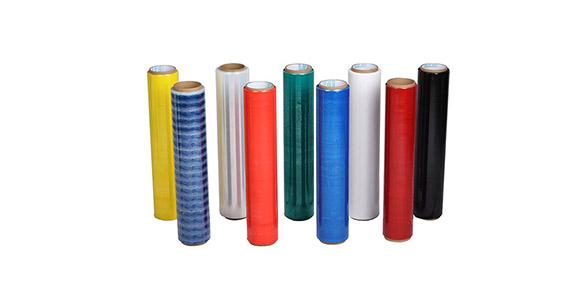Stretch film, also known as stretch wrap, is a widely used packaging material that offers numerous benefits in various industries. This thin and highly stretchable plastic film provides excellent protection, stability, and containment for products during storage and transportation. With its versatility and cost-effectiveness, stretch film has become an indispensable tool for businesses worldwide. In this article, we will explore the features, applications, and advantages of stretch film, highlighting its importance as a packaging solution.
- What is Stretch Film? Stretch film is a flexible plastic film made from linear low-density polyethylene (LLDPE). It is manufactured using a specialized process that allows the film to stretch significantly without breaking. This stretchability enables the film to tightly wrap around products, creating a secure and stable packaging.
- Features and Types of Stretch Film: Stretch film comes in various types, each designed to suit specific packaging needs. The common features and types of stretch film include:
- Thickness: Stretch film is available in different thicknesses, ranging from 12 to 80 microns. Thicker films offer greater puncture resistance and load stability.
- Stretchability: Stretch film can stretch up to 200–300% of its original length, ensuring a tight and secure wrap around products.
- Transparency: Most stretch films are transparent, allowing easy identification of packaged items and simplifying inventory management.
- Colors and Prints: Stretch films can be customized with colors or printed designs to enhance brand visibility and product identification.
- Applications of Stretch Film: Stretch film finds applications in a wide range of industries, including:
- Logistics and Shipping: It is extensively used in pallet wrapping to secure and stabilize goods during transportation, preventing damage from shifting or falling.
- Food Industry: Stretch film is utilized for wrapping perishable goods such as fruits, vegetables, and meat to maintain freshness and prevent contamination.
- Manufacturing and Warehousing: It provides protection to products from dust, moisture, and scratches during storage and handling.
- Furniture and Appliances: Stretch film ensures the safe transport and delivery of furniture, appliances, and electronic equipment by securely bundling them together.
- E-commerce and Retail: It plays a crucial role in packaging products for online sales, safeguarding them from tampering and reducing the risk of damage during transit.
Advantages of Stretch Film: Stretch film offers several advantages that make it a preferred choice for packaging:
- Cost-Effective: Stretch film is relatively inexpensive compared to other packaging materials, offering cost savings for businesses.
- Improved Load Stability: The excellent elongation properties of stretch film contribute to load stability, minimizing the risk of goods shifting or toppling during transport.
- Protection and Preservation: It protects products from dust, moisture, and UV radiation, ensuring their quality and extending shelf life.
- Enhanced Efficiency: Stretch film allows for quick and efficient packaging, reducing labor costs and improving operational efficiency.
- Sustainability: Some stretch films are recyclable, contributing to environmental sustainability and reducing waste.
Stretch film is an indispensable packaging material that provides essential protection, stability, and containment for a wide range of products. Its versatility, cost-effectiveness, and ability to adapt to different packaging needs make it a preferred choice in various industries. Whether it’s for securing goods during transportation, maintaining product freshness, or improving inventory management, stretch film offers a reliable and efficient solution. By understanding its features, applications, and advantages, businesses can harness the full potential of stretch film to optimize their packaging processes and ensure the safe delivery of their products.
